Homemade Plant Pots from Recycled Materials
Are you looking to add a touch of creativity to your gardening while being kind to the planet? are not only a fantastic way to showcase your plants but also a sustainable choice that helps reduce waste. Imagine transforming everyday items like plastic bottles, tin cans, and even old containers into beautiful and functional planters. In this article, we will explore various methods to create these unique pots, provide you with a step-by-step guide, and share tips to ensure your plants thrive in their new homes. So, roll up your sleeves, grab those discarded materials, and let’s dive into the world of DIY plant pots!
Before you embark on your exciting journey of crafting plant pots, it’s crucial to identify the right recycled materials. The beauty of using recycled items is that you can find them almost anywhere! Here are some common materials you might consider:
- Plastic Bottles: These are lightweight, easy to cut, and come in various sizes, making them perfect for small to medium plants.
- Tin Cans: With a bit of creativity, these can be transformed into charming pots. Just make sure to punch some holes for drainage!
- Old Containers: Think about repurposing old bowls, teacups, or even wooden crates. The options are endless!
By choosing materials that you already have at home, you not only save money but also contribute to a more sustainable lifestyle.
Now that you’ve gathered your materials, let’s get into the nitty-gritty of making your own plant pots. This step-by-step guide will walk you through the process, ensuring you can easily replicate it at home.
Preparation is key in crafting your plant pots. Start by cleaning your materials thoroughly to remove any residues or contaminants. This step is essential to create a safe environment for your plants to thrive. For example, if you’re using plastic bottles, rinse them out and remove any labels. If you’re working with tin cans, make sure to smooth out any sharp edges after opening them.
To ensure your recycled materials are clean, you can use a mixture of warm soapy water and a scrub brush. For stubborn labels, soaking the items in warm water can help loosen the adhesive. Just remember, a clean pot leads to healthy plants!
Once your materials are clean, it’s time to cut and shape them. For plastic bottles, you can create pots of various heights by cutting them at different levels. For tin cans, you might want to create a design with holes for drainage. Always keep in mind the drainage needs of your plants to prevent overwatering.
After crafting your pots, it’s time to add some personality! Decorating your pots can be as simple or as intricate as you like. You can paint them in vibrant colors, use decoupage techniques with old newspapers or magazines, or even wrap them with twine or fabric for a rustic look. The goal here is to make your pots reflect your style!
Using recycled materials for your plant pots is not just a fun activity; it comes with a plethora of benefits. From environmental sustainability to cost savings, let’s explore why you should consider this eco-friendly option.
Creating plant pots from recycled materials significantly reduces waste. By repurposing items that would otherwise end up in landfills, you’re conserving resources and promoting eco-friendly practices. It’s like giving a second life to materials that have served their purpose!
Let’s face it: gardening can sometimes get pricey, especially when it comes to buying pots. But by using recycled materials, you can save a considerable amount of money. Plus, you get the added bonus of nurturing your plants in unique, one-of-a-kind containers!
To ensure your plants thrive in their recycled pots, it’s essential to follow some key tips regarding soil selection, watering, and sunlight exposure. Choosing the right soil mix is crucial for plant health. You can opt for a standard potting mix or create your own by combining soil with compost for added nutrients.
Different plants have different soil requirements. For example, succulents prefer well-draining soil, while tropical plants thrive in moisture-retentive mixes. Always consider the needs of your plants when choosing soil.
Understanding proper watering techniques is vital. It’s essential to gauge moisture levels by sticking your finger into the soil. If it feels dry an inch down, it’s time to water. Establishing a routine that suits your recycled pot setup will ensure your plants remain healthy and happy.
Feeling adventurous? Let’s explore some innovative ideas for customizing your recycled materials into unique plant pots that will add flair to your garden or home.
Creating themed pots can enhance your garden's aesthetic. You could have seasonal designs, color-coordinated pots, or whimsical creations that reflect your personality. The sky's the limit when it comes to your imagination!
Why not incorporate functionality into your designs? Create multi-purpose planters that serve additional roles, such as vertical gardens or herb spirals. This way, you maximize your gardening space while showcasing your creativity.
Regular maintenance is key to ensuring the longevity of your recycled plant pots. Just like any other gardening tool, your pots will require some care to keep them looking great and functioning well.
Learn the best practices for maintaining your recycled pots, including cleaning methods and periodic checks for wear and tear. A little upkeep can go a long way in prolonging their lifespan.
As the seasons change, so should your care routine. Adjusting watering and sunlight exposure throughout the year will help your plants remain healthy and adapt to their environment.
Q: Can I use any kind of recycled material for plant pots?
A: While many materials can be repurposed, it's important to ensure they are safe for plants. Avoid materials that might leach harmful chemicals.
Q: How do I ensure proper drainage in my recycled pots?
A: Make sure to create holes in the bottom of your pots for excess water to escape. This is crucial for preventing root rot.
Q: Can I grow any type of plant in recycled pots?
A: Most plants can thrive in recycled pots, but always consider their specific needs regarding soil, sunlight, and water.

Choosing the Right Materials
When it comes to crafting your own plant pots from recycled materials, the first step is to choose the right materials. This is not only crucial for the functionality of your pots but also for ensuring that your plants thrive in their new homes. The beauty of using recycled items is that you can find them all around you, often in your own home! Think about the everyday items that usually end up in the trash or recycling bin. Here are some common materials you can repurpose:
- Plastic Bottles: These are incredibly versatile. You can use them in various sizes, from small water bottles for herbs to larger soda bottles for bigger plants.
- Tin Cans: Once emptied and cleaned, tin cans can make excellent rustic planters. Just remember to poke some drainage holes at the bottom!
- Old Containers: Any old container that can hold soil and has drainage capabilities can be transformed into a plant pot. Think about ceramic bowls, wooden boxes, or even old teacups.
Before you dive into your crafting adventure, consider the following factors to ensure your materials are suitable:
| Material | Pros | Cons |
|---|---|---|
| Plastic Bottles | Lightweight, easy to cut, and can be painted or decorated. | Can degrade in sunlight, so consider placing them in shaded areas. |
| Tin Cans | Durable and provides a rustic look; can be painted. | Can rust over time; ensure proper drainage to prevent water accumulation. |
| Old Containers | Unique shapes and sizes; adds character to your garden. | Some materials may not be suitable for outdoor use, so check for durability. |
Ultimately, the right materials will depend on your personal style, the types of plants you want to grow, and the space you have available. Don't be afraid to get creative! For instance, if you have a collection of mismatched teacups, why not create a whimsical herb garden? Or if you have a stack of old wooden crates, they can be transformed into a charming vertical garden.
In addition to aesthetics, always prioritize the health of your plants. Check that any materials you choose are free from harmful chemicals and safe for planting. This ensures your plants not only look good but also thrive in their new environment. So, gather your materials, unleash your creativity, and let’s make some stunning recycled plant pots!
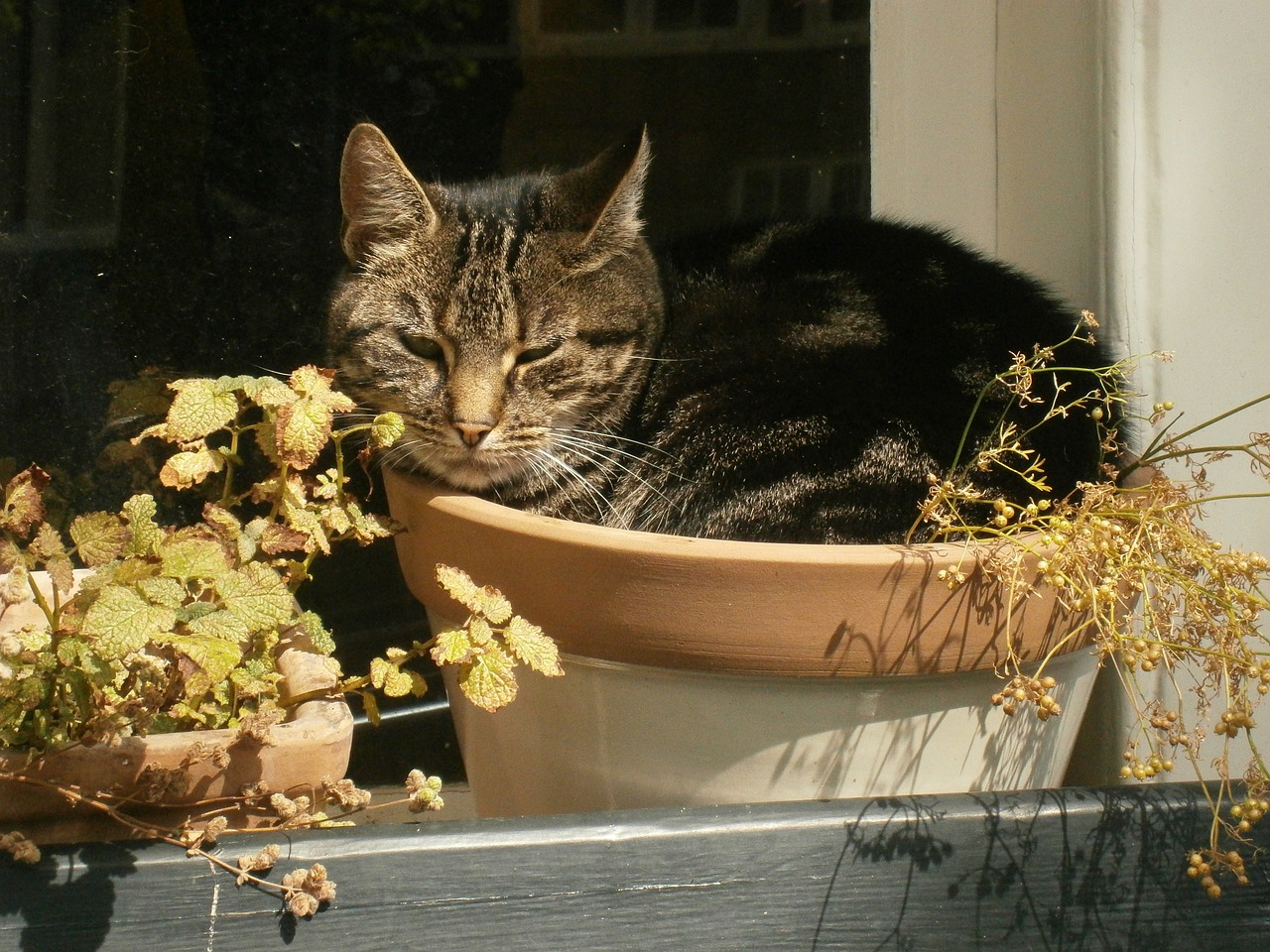
Step-by-Step Guide to Making Pots
Creating your own plant pots from recycled materials is not only a fun and creative endeavor but also a fantastic way to contribute to sustainability. In this step-by-step guide, we will walk you through the process, ensuring you have all the information you need to craft beautiful pots right at home. Whether you're a seasoned gardener or just starting out, you'll find this guide easy to follow and packed with tips!
First things first, you need to gather your recycled materials. Common items that can be transformed into plant pots include:
- Plastic bottles: They are lightweight and come in various sizes.
- Tin cans: Perfect for small plants and herbs.
- Old containers: Think of yogurt cups, coffee tins, or even shoe boxes!
Make sure to choose items that are sturdy enough to hold soil and plants. Once you have your materials, it’s time to prepare them for crafting.
Before diving into the crafting process, you need to prepare your materials. This involves cleaning, cutting, and ensuring they are safe for your plants:
Start by thoroughly cleaning your chosen materials. For plastic bottles, rinse them out with warm soapy water to remove any residues. For tin cans, be cautious of sharp edges after cutting off the tops. You can use a can opener that leaves a smooth edge to avoid injuries. This step is crucial as it ensures a healthy environment for your plants to thrive.
Next, you’ll want to cut and shape your materials. For plastic bottles, you can cut them in half or create a series of holes for drainage. Tin cans can be punched with holes at the bottom to allow excess water to escape. A good rule of thumb is to create at least three to four drainage holes, regardless of the material you use. This helps prevent waterlogging, which can damage your plants.
Now that your materials are clean and shaped, it’s time to assemble your pots. If you’re using plastic bottles, you can leave them as is for a simple look or paint them for added flair. For tin cans, consider wrapping them in twine or fabric for a rustic touch. The key is to let your creativity shine!
Once your pots are ready, it’s time to fill them with soil and add your plants. Choose a suitable soil mix depending on the type of plants you are potting. For example, succulent mixes are great for cacti, while a rich potting mix works well for flowering plants. Gently place your plants in the pots and fill in around the roots with soil, ensuring they are secure.
Finally, let’s add some personality to your new pots! You can paint them, use stickers, or even decoupage with old magazines. The possibilities are endless! Consider using natural elements like stones or seashells to give your pots a unique touch. Remember, the goal is to make them reflect your personal style while still being functional.
Q: Can I use any type of plastic for my pots?
A: It’s best to use plastic that is sturdy and free from harmful chemicals. Avoid using containers that previously held chemicals or toxic substances.
Q: How do I ensure proper drainage in my pots?
A: Always make sure to create drainage holes at the bottom of your pots. This will prevent water from accumulating and damaging your plants.
Q: Are recycled pots safe for all types of plants?
A: Most plants can thrive in recycled pots, but it's important to choose the right soil and ensure proper drainage for optimal growth.
By following these simple steps, you can create stunning plant pots that not only enhance your gardening experience but also contribute positively to the environment. So, roll up your sleeves and start crafting today!

Preparing the Materials
Before diving into the exciting world of crafting your own plant pots, it's vital to prepare your materials properly. The process of preparation is not just a step; it’s the foundation of your project. Think of it as setting the stage for a fantastic performance. If the stage is cluttered and messy, how can the show go on smoothly? So, let’s ensure your materials are primed and ready for their new role as beautiful planters!
First and foremost, cleaning your chosen materials is essential. This step removes any residues, dirt, or labels that could hinder plant growth. You wouldn’t want your plants to be suffocated by leftover food or chemicals, would you? A simple rinse with warm soapy water usually does the trick. For stubborn labels, a little soaking can help loosen the adhesive. Just remember to rinse thoroughly afterward to ensure no soap remains.
Next up is cutting and shaping. Depending on the type of material you’ve chosen—be it plastic bottles, tin cans, or old containers—each will require different cutting techniques. For instance, when working with plastic bottles, cutting them in half can create two pots, which is a fantastic way to maximize your resources. Ensure you leave enough height for your plants to grow comfortably. Always use sharp scissors or a utility knife, and be cautious to avoid any injuries. If you're feeling adventurous, consider creating unique shapes or designs that can add character to your garden.
To ensure proper drainage, it’s important to make holes at the bottom of your pots. This allows excess water to escape, preventing root rot—a common issue that can plague even the most seasoned gardeners. You can use a drill or a simple nail and hammer to create these drainage holes. Just a few small holes will suffice, and you’ll be amazed at how this small detail can make a big difference in your plants’ health.
After you’ve cleaned, cut, and shaped your materials, it’s time to think about aesthetics. While functionality is key, don’t forget that your pots can also be a reflection of your personal style. Consider the colors and patterns that resonate with you. You might want to paint the outside of your pots or wrap them in twine for a rustic look. The possibilities are endless, and this is where your creativity can truly shine!
Lastly, remember to check the safety of the materials you are using. Some plastics can leach harmful chemicals into the soil, which can be detrimental to your plants. If you’re unsure about a material, do a quick search to confirm it’s safe for gardening. After all, your plants deserve the best, and you want to ensure they thrive in their new home.
In summary, preparing your materials for homemade plant pots is a crucial step that involves cleaning, cutting, shaping, and ensuring safety. By taking the time to do this right, you set the stage for a successful and enjoyable gardening experience. So gather your materials, roll up your sleeves, and let the crafting begin!
- What types of materials can I use for making plant pots? You can use a variety of recycled materials including plastic bottles, tin cans, old containers, and even cardboard boxes, as long as they are safe for plants.
- How do I ensure the pots have proper drainage? Make several small holes at the bottom of your pots using a drill or a nail and hammer to allow excess water to escape.
- Can I paint my recycled pots? Absolutely! Painting your pots can add a personal touch and enhance their aesthetic appeal. Just make sure to use non-toxic paint.
- Is it safe to use plastic containers for planting? Some plastics can leach harmful chemicals, so it’s best to use food-grade plastics or check if the plastic is labeled as safe for gardening.

Cleaning Techniques
When it comes to crafting your own plant pots from recycled materials, cleanliness is key. You want to ensure that the items you choose are free from any residues, contaminants, or chemicals that could harm your plants. Start by rinsing your materials with warm water to remove any dirt or debris. For stubborn residues, a gentle scrub with a sponge or cloth can work wonders. If you're dealing with plastic bottles or containers, make sure to remove any labels completely, as they can harbor adhesives that might leach into the soil.
Another effective cleaning method involves using a mixture of vinegar and water. This natural solution not only cleans but also disinfects your materials. Combine equal parts of vinegar and water in a spray bottle, then spray the solution onto the surfaces of your pots. Allow it to sit for a few minutes before wiping it away with a cloth. This technique is especially useful for tin cans, which can sometimes have rust or residues that need extra attention.
Here's a quick cleaning checklist to ensure your materials are ready for planting:
- Rinse with warm water.
- Scrub with a sponge for stubborn residues.
- Use vinegar and water solution for disinfecting.
- Remove all labels thoroughly.
- Check for sharp edges and smooth them out if necessary.
Finally, it's important to let your cleaned materials dry completely before you start planting. Moisture can lead to mold growth, which is the last thing you want in your gardening project. By taking the time to properly clean and prepare your recycled materials, you're setting the stage for a successful and healthy planting experience.
1. Can I use any type of recycled material for plant pots?
While many materials can be used, it's best to avoid those that may leach harmful chemicals into the soil, such as certain plastics. Look for food-grade containers, glass, and untreated wood for safer options.
2. How do I ensure proper drainage in my recycled pots?
Make sure to drill holes in the bottom of your pots to allow excess water to escape. This is crucial for preventing root rot and ensuring your plants thrive.
3. Are there any plants that shouldn't be placed in recycled pots?
Generally, most plants can adapt to recycled pots, but it's wise to avoid very sensitive plants that require specific soil conditions or moisture levels, as these may be harder to maintain in unconventional containers.
4. How can I decorate my recycled plant pots?
You can use paint, decoupage, or even natural elements like twine or stones to personalize your pots. Just ensure any materials used are safe for plants!
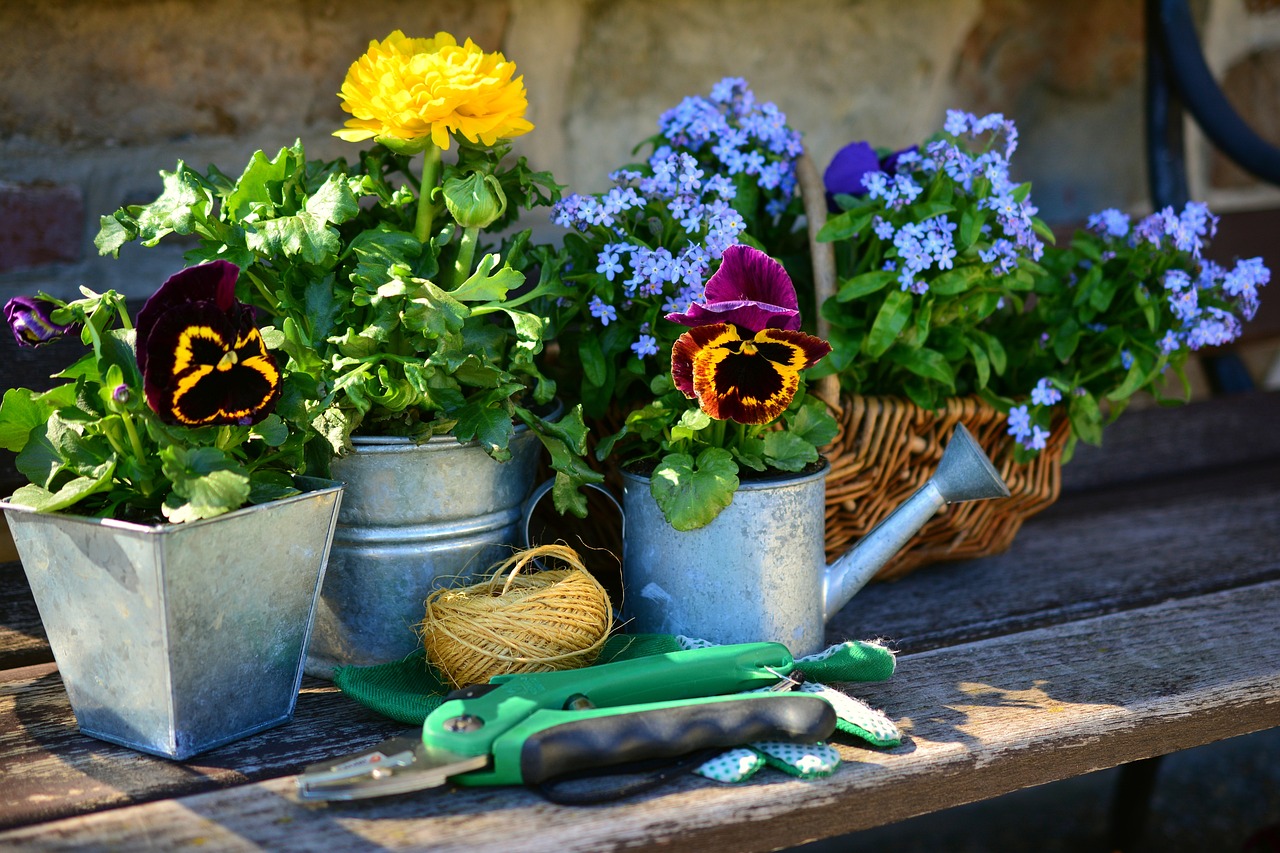
Cutting and Shaping
When it comes to crafting your own plant pots from recycled materials, those materials is a crucial step that can make or break your project. Whether you're working with plastic bottles, tin cans, or other containers, the way you cut and shape them will determine not just their appearance, but also their functionality. Let's dive into some essential techniques that will help you create beautiful and effective planters.
First, it’s important to consider the size of your pot. Depending on the type of plant you intend to grow, you may need a larger or smaller container. For example, herbs generally require smaller pots, while larger plants like tomatoes need more space. Grab a ruler and measure your desired height and width before making any cuts. This will ensure that your plants have enough room to grow and thrive.
Next, the cutting process itself can vary depending on the material. For plastic bottles, a sharp utility knife or scissors will do the trick. Make sure to cut the bottle in half or create a series of holes in the bottom for drainage. This is crucial because without proper drainage, your plants could drown in excess water. As you cut, be cautious and wear protective gloves to avoid any injuries.
For tin cans, you’ll want to use a can opener to remove the top safely. After that, you can use a hammer and a nail to create drainage holes in the bottom. Remember, sharp edges are a hazard, so consider using sandpaper to smooth out any rough spots around the rim. This will prevent any cuts when you're handling your new pots.
As you shape your pots, think about aesthetics as well. You might want to create a unique design by cutting patterns into the sides of your containers. For example, if you’re using a plastic bottle, you could cut out flower shapes or geometric designs that will allow light to filter through, adding a decorative touch to your garden. This transformation not only enhances the visual appeal but also creates an interesting play of light and shadow.
Lastly, if you’re feeling particularly creative, consider combining different materials. You can attach smaller pots to larger ones using twine or wire, creating a cascading effect that’s not only functional but also eye-catching. The possibilities are endless when you let your imagination run wild!
In summary, cutting and shaping your recycled materials is an art form that requires a bit of planning and creativity. By taking the time to measure, cut, and design thoughtfully, you can create unique plant pots that reflect your personal style while providing a nurturing environment for your plants.
- What materials can I use to make recycled plant pots? You can use a variety of materials, including plastic bottles, tin cans, old containers, and even cardboard boxes, as long as they can hold soil and have drainage.
- How do I ensure proper drainage in my recycled pots? Make sure to create holes at the bottom of your pots. For plastic bottles, you can cut the bottom off or poke holes with a knife. For tin cans, use a hammer and nail to create drainage holes.
- Can I paint my recycled pots? Absolutely! Painting your pots can add a personal touch. Just make sure to use non-toxic paints that are safe for plants.
- Are there any plants that shouldn’t be grown in recycled pots? While most plants can thrive in recycled pots, it's important to consider the size and drainage. Avoid very large plants that require deep pots unless you have a suitable container.
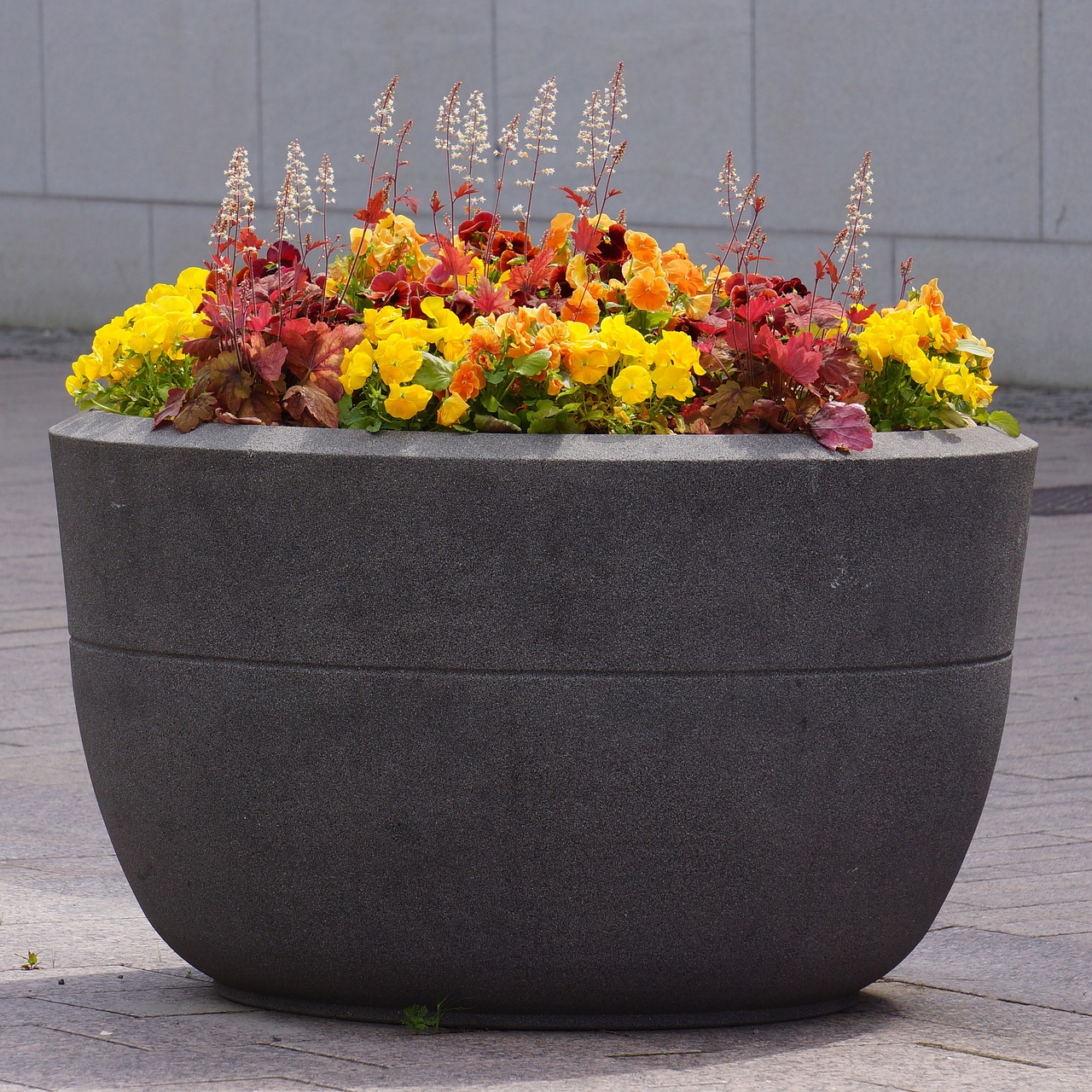
Decorating Your Pots
Once you've crafted your recycled plant pots, it's time to unleash your inner artist and add a splash of personality to your creations! Decorating your pots not only enhances their aesthetic appeal but also allows you to express your unique style. Imagine walking through your garden or home and being greeted by vibrant colors and creative designs that reflect your personality. The best part? You can use materials you already have at home to make your pots truly one-of-a-kind!
There are a myriad of techniques you can explore when it comes to decorating your pots. One popular method is painting. Whether you choose bold, bright colors or soft pastels, paint can transform a plain pot into a stunning focal point. Acrylic paints work well for this purpose, as they are durable and come in an array of colors. If you're feeling adventurous, consider using a sponge or brush to create patterns, or even stencils for more intricate designs. Remember, the only limit is your imagination!
Another fantastic way to personalize your pots is through decoupage. This technique involves gluing decorative paper, fabric, or even images onto the surface of your pots. You can use old magazines, wrapping paper, or even photographs to create a collage effect. To achieve a professional finish, apply a layer of decoupage glue over the top of your design and let it dry. This not only seals your artwork but also adds a glossy finish that makes your pots stand out.
For those who prefer a more natural touch, consider incorporating natural elements into your designs. You can wrap twine or jute around the pots for a rustic look, or attach small branches, leaves, or pebbles for a more organic feel. These materials can be glued or tied onto the pot, creating a beautiful texture that complements your plants. Additionally, you could paint the pots in earthy tones and decorate them with small stones or shells to evoke a beachy vibe.
If you’re looking for a fun project to do with kids or friends, why not host a pot-decorating party? Gather your supplies—paints, brushes, glue, and any decorative items you want to use—and let your creativity flow. This can be a great way to bond while making something beautiful for your garden. Plus, everyone can take home their unique pot, adding even more charm to your outdoor space.
In summary, decorating your recycled pots is an exciting way to bring life and character to your gardening experience. Whether through painting, decoupage, or using natural materials, the options are endless. So grab your supplies, let your creativity shine, and watch as your garden transforms into a vibrant oasis!
- What materials are best for decorating recycled pots? You can use acrylic paints, decoupage glue, natural elements like twine and stones, or even fabric scraps to add a personal touch to your pots.
- Can I use any type of paint on my pots? It's best to use acrylic paints as they are durable and weather-resistant, making them ideal for outdoor use.
- How do I ensure my decorations last? Seal your decorated pots with a clear varnish or additional layer of decoupage glue to protect your artwork from the elements.
- Is decorating pots a good project for kids? Absolutely! Decorating pots can be a fun and educational activity for kids, allowing them to express their creativity while learning about gardening.
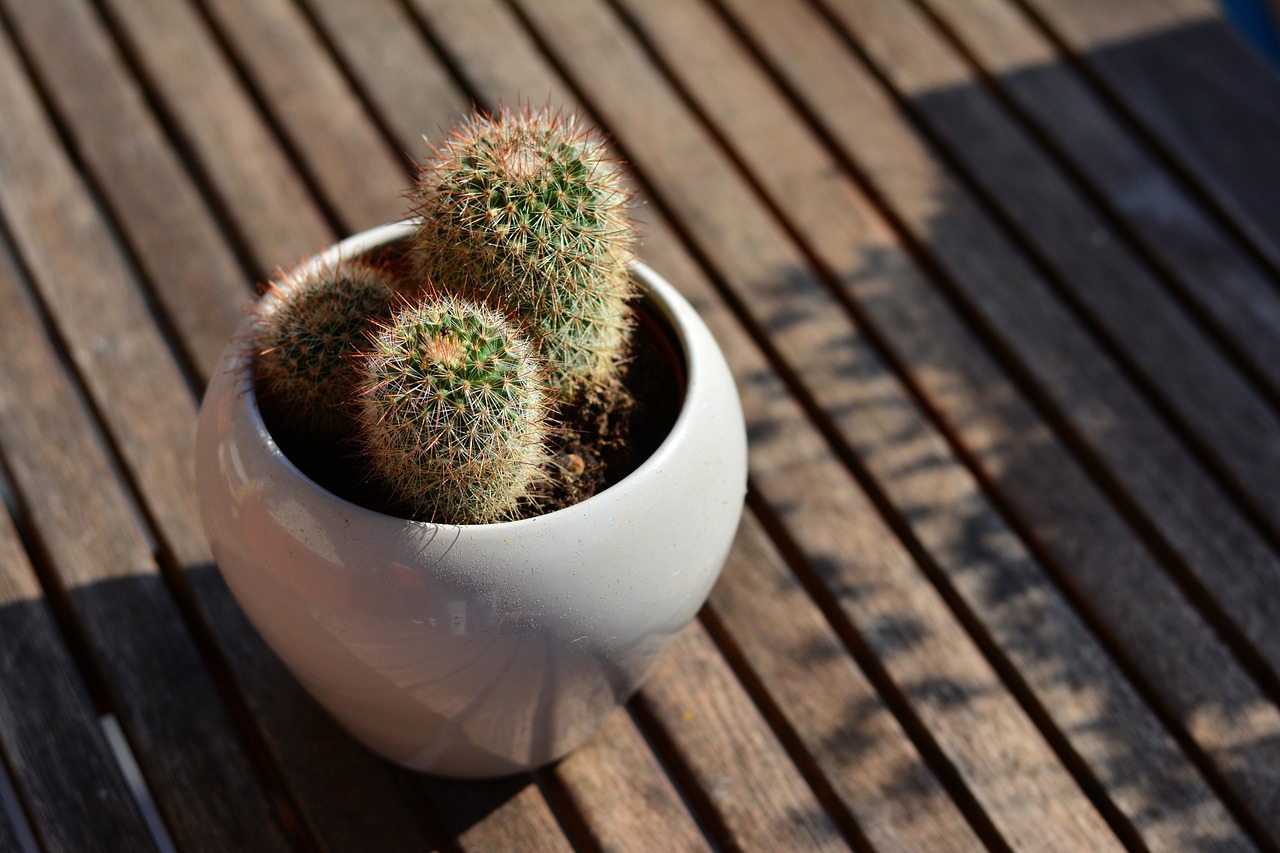
Benefits of Using Recycled Pots
Using recycled materials for plant pots is not just a trend; it's a transformative approach to gardening that brings a plethora of benefits. First and foremost, it significantly contributes to environmental sustainability. By repurposing items that would otherwise end up in landfills, you are actively participating in waste reduction. Think about it: every plastic bottle or tin can you turn into a planter is one less piece of trash polluting our planet. This simple act of creativity can inspire others to follow suit, creating a ripple effect of eco-friendliness.
Moreover, using recycled pots can lead to substantial cost savings. Store-bought pots can be surprisingly expensive, especially if you're looking for unique designs. By crafting your own from recycled materials, you not only save money but also invest in a project that reflects your personal style. Imagine the pride you'll feel showcasing a beautiful pot that you made yourself, all while knowing it cost you next to nothing!
Another significant advantage is the opportunity for creative expression. Each recycled pot can be a canvas for your artistic flair. Whether you choose to paint, decorate with fabric, or add natural elements, the possibilities are endless. This not only makes your gardening experience more enjoyable but also allows you to create a garden that is uniquely yours. You can even customize pots to match your home’s decor or the season, adding a delightful touch to your living space.
Lastly, using recycled pots contributes to functional gardening. Many recycled materials can be transformed into innovative designs that enhance the way you garden. For instance, a stack of old tires can become a vertical garden, saving space while adding a striking visual element to your yard. By thinking outside the box, you can create planters that not only serve their purpose but also become conversation starters.
In summary, the benefits of using recycled pots are multifaceted. They promote sustainability, save money, foster creativity, and enhance functionality in your gardening endeavors. So, why not dive into this eco-friendly project and see how it can enrich your gardening experience?
- What types of materials can I use to make recycled pots? You can use plastic bottles, tin cans, old mugs, and even wooden crates. Just make sure they are safe for plants.
- Are recycled pots durable? Yes, with proper care, recycled pots can be just as durable as store-bought options. Regular maintenance will help prolong their life.
- Can I use recycled pots for all types of plants? Most plants can thrive in recycled pots, but you should consider the specific needs of your plants regarding drainage and soil type.
- How do I decorate my recycled pots? You can paint them, use decoupage techniques, or even wrap them in twine or fabric for a rustic look.

Environmental Impact
The environmental impact of creating plant pots from recycled materials is profound and multifaceted. By repurposing items that would otherwise end up in landfills, we contribute to a significant reduction in waste. This practice not only conserves natural resources but also minimizes the carbon footprint associated with manufacturing new pots. Imagine the amount of plastic, metal, and other materials that are discarded daily—by transforming these into functional plant pots, we are taking a stand against pollution and promoting sustainability.
Moreover, using recycled materials fosters a culture of creativity and resourcefulness. It encourages individuals to think outside the box and find innovative ways to utilize what they already have, rather than purchasing new products. This shift in mindset is crucial as it helps mitigate the overconsumption that plagues our society today. When we choose recycled pots, we are not just gardening; we are making a statement about our commitment to the environment.
Consider the following key benefits of using recycled materials for plant pots:
- Waste Reduction: Each recycled pot represents one less item in the landfill, contributing to a cleaner planet.
- Resource Conservation: By reusing materials, we decrease the demand for new resources, preserving ecosystems and reducing habitat destruction.
- Lower Carbon Emissions: The energy required to produce new pots is significantly higher than that needed to repurpose existing materials.
In addition to these benefits, creating plant pots from recycled materials can inspire others in your community to adopt similar practices. When friends and neighbors see your unique, eco-friendly pots, they may be motivated to explore recycling in their own gardening endeavors. This ripple effect can lead to a broader movement towards sustainability, making a more substantial impact than any individual effort alone.
Ultimately, the environmental benefits of using recycled materials for plant pots extend beyond personal gardening. They represent a collective step towards a more sustainable future. By embracing this practice, we are not only nurturing our plants but also nurturing the planet. So, the next time you consider throwing away that old plastic bottle or tin can, think twice—your next beautiful plant pot could be just a few creative steps away!
Q: Can I use any type of recycled material for plant pots?
A: While many materials can be repurposed, it’s essential to choose items that are safe for plants. Avoid materials that may leach harmful chemicals, such as certain plastics or treated woods.
Q: How do I ensure proper drainage in my recycled pots?
A: Make sure to create drainage holes at the bottom of your pots. This can be done using a drill or a sharp tool to poke holes, allowing excess water to escape and preventing root rot.
Q: Are there any specific plants that thrive better in recycled pots?
A: Most plants can adapt to recycled pots as long as they have proper drainage and soil. However, herbs and succulents tend to do particularly well due to their lower moisture requirements.
Q: What are some creative ways to decorate my recycled pots?
A: You can paint them, use decoupage techniques, or even wrap them with natural materials like jute or twine to give them a unique flair that matches your style.
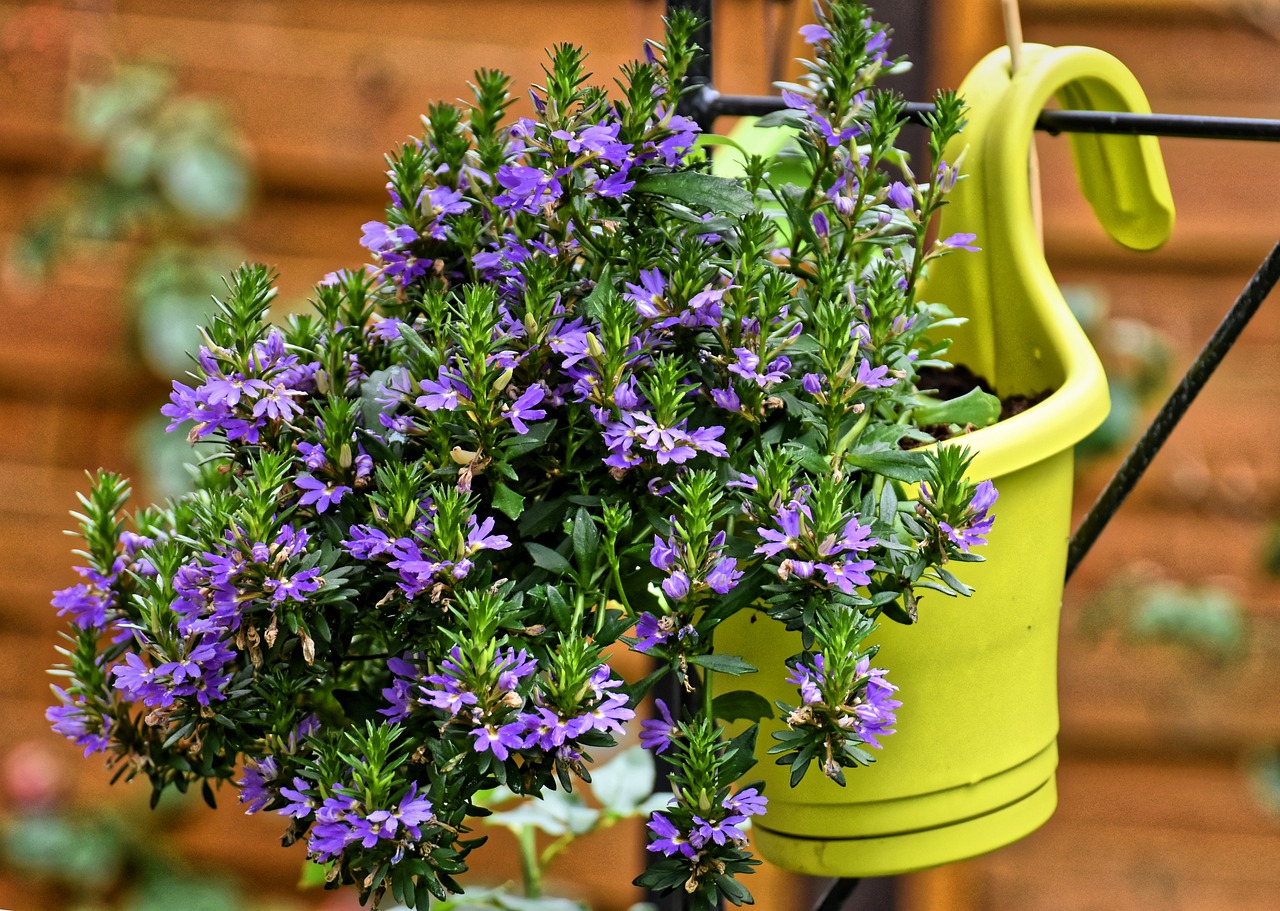
Cost-Effectiveness
When it comes to gardening, one of the most appealing aspects of using recycled materials for plant pots is their . Let's face it: gardening can sometimes feel like a luxury hobby, especially when you consider the price tags on store-bought pots. However, by embracing creativity and sustainability, you can create stunning plant pots without breaking the bank. Imagine transforming a simple plastic bottle or an old tin can into a beautiful home for your plants—it's not just a fun project, but also a way to save money!
Using recycled materials means you can allocate your gardening budget to other essentials, such as high-quality soil or unique plants that will flourish in your homemade pots. Plus, the cost savings can really add up! For example, consider the following:
| Material Type | Store-Bought Pot Price | Recycled Material Cost | Estimated Savings |
|---|---|---|---|
| Plastic Bottle | $5 | Free | $5 |
| Tin Can | $4 | Free | $4 |
| Old Container | $10 | Free | $10 |
As you can see from the table above, the savings from using recycled materials can be significant. Not only does this approach lighten your financial load, but it also allows you to invest in more plants, soil, or even gardening tools!
Moreover, the process of creating your own pots can be incredibly rewarding. It’s like a treasure hunt—finding potential planters in your home and giving them a new life. Each pot you make can become a conversation starter, showcasing your unique style and commitment to sustainability. So, why spend money on generic pots when you can craft something that reflects your personality while being budget-friendly?
In conclusion, the cost-effectiveness of using recycled materials for plant pots not only helps your wallet but also encourages a more sustainable lifestyle. By embracing this creative approach, you can enjoy gardening without the financial strain, all while contributing positively to our planet. So grab those old containers, and let’s get crafting!
- What types of materials can I use for recycled plant pots? You can use a variety of materials including plastic bottles, tin cans, yogurt containers, and even old shoes or teacups!
- Do I need to treat the recycled materials before using them? Yes, it's important to clean and prepare your materials properly to ensure they are safe for your plants.
- Can I use recycled pots for all types of plants? Most plants can thrive in recycled pots, but it's essential to consider drainage and the size of the pot relative to the plant's needs.
- How do I decorate my recycled plant pots? You can paint them, use decoupage techniques, or even add natural elements like twigs or stones for a unique look.
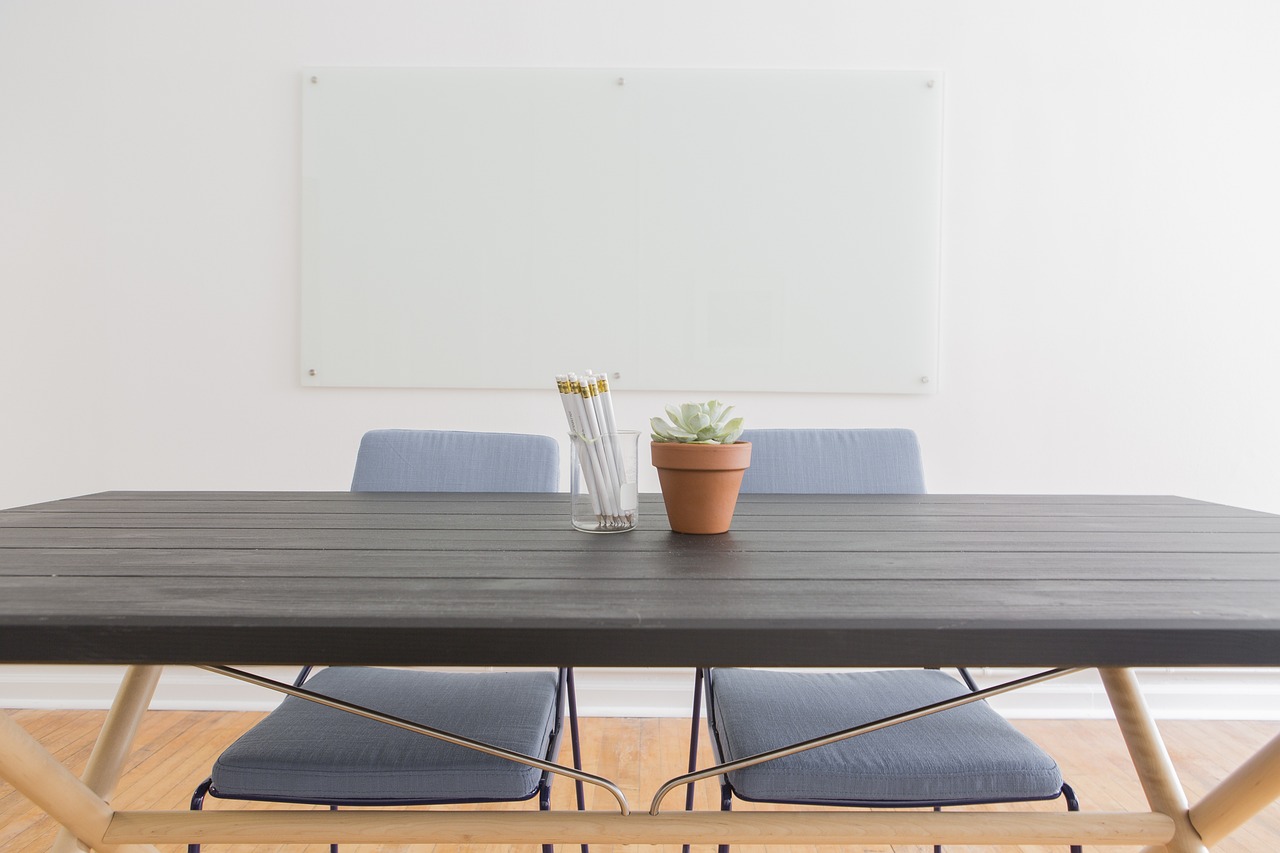
Tips for Successful Planting
When it comes to nurturing your plants in recycled pots, there are several essential tips to keep in mind for ensuring their success. First and foremost, the choice of soil is crucial. Not all soils are created equal, and selecting the right mix can make a world of difference in how well your plants thrive. For instance, if you’re planting herbs, a light, well-draining potting mix is ideal, while larger plants may require a denser soil that retains moisture better. You might also consider adding materials like perlite or vermiculite to improve drainage, especially in pots that may not have adequate holes.
Next, let’s talk about watering techniques. Overwatering is one of the most common mistakes gardeners make, especially with recycled pots that may not have the same drainage capabilities as traditional ones. To avoid this, you can use your finger to check the moisture level of the soil. If the top inch feels dry, it’s time to water. Additionally, establishing a watering routine based on the specific needs of your plants can help maintain their health. For example, succulents and cacti thrive on less water compared to leafy greens, which may require more frequent watering.
Sunlight exposure is another critical factor to consider. Different plants have varying light requirements, and understanding these needs can lead to flourishing greenery. If your recycled pots are placed indoors, ensure they receive adequate natural light, or consider using grow lights if necessary. For outdoor pots, be mindful of the sun's position throughout the day and adjust their locations accordingly. A pot that gets too much sun could dry out quickly, while one that’s too shaded might not get enough light for the plants to grow.
Finally, don’t forget about the importance of regular maintenance. Keep an eye on your plants for any signs of distress, such as yellowing leaves or stunted growth, which could indicate issues with soil, watering, or light. Regularly cleaning your pots and checking for pests can help prevent problems before they escalate. By following these tips, you’ll be well on your way to creating a thriving garden with your unique recycled plant pots!
- What types of soil are best for recycled pots? It's best to use a potting mix that suits the specific plants you are growing. Consider adding perlite or vermiculite for better drainage.
- How can I tell if my plant needs water? Stick your finger into the soil; if the top inch is dry, it’s time to water.
- Do recycled pots need drainage holes? Yes, drainage holes are essential to prevent overwatering. If your recycled pot doesn't have any, consider drilling some or using a layer of gravel at the bottom.
- Can I use any recycled material for pots? Most materials can be used, but ensure they are safe and non-toxic for plants. Avoid materials that may leach harmful chemicals.
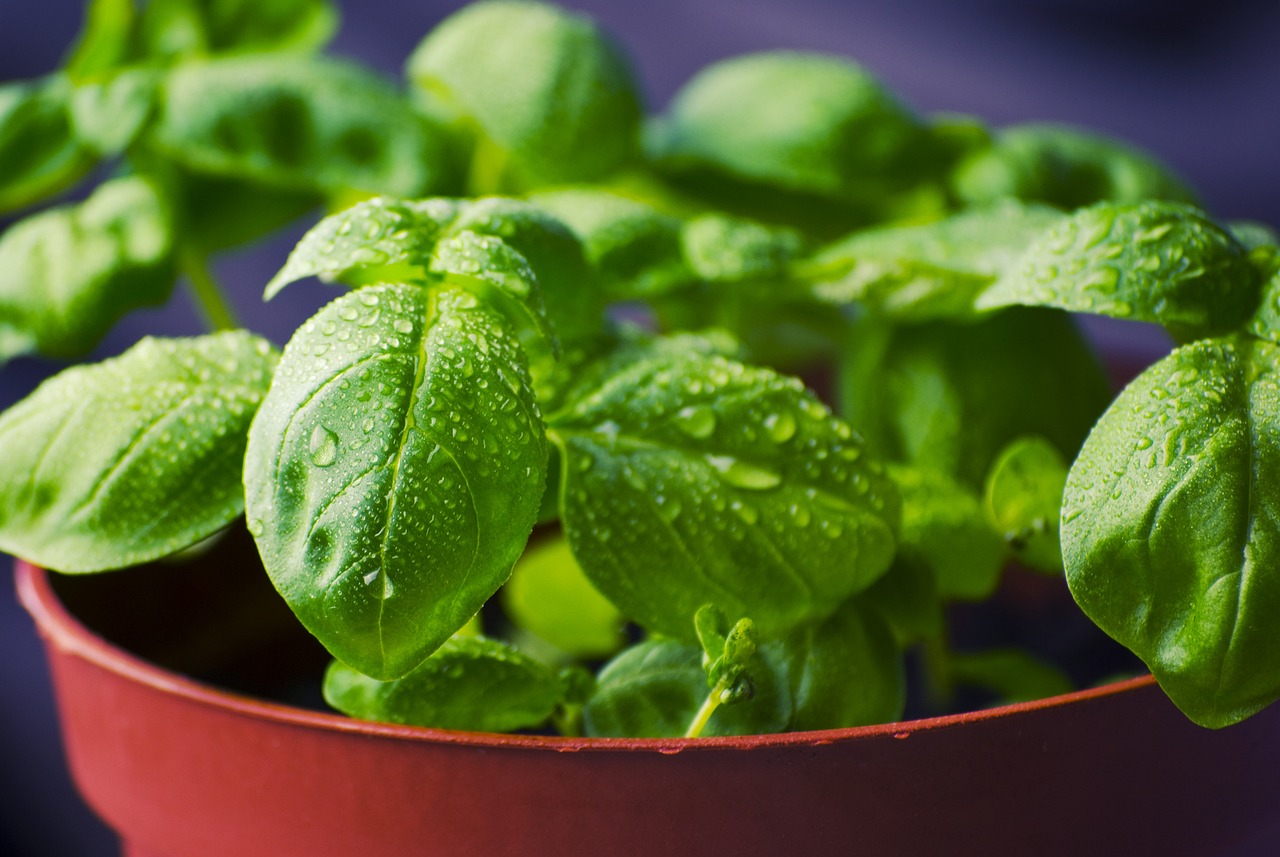
Soil Selection
Choosing the right soil mix is crucial for the health of your plants, especially when using homemade recycled pots. The soil acts as the foundation for your plants, providing essential nutrients, moisture retention, and drainage. When selecting soil for your recycled pots, consider the type of plants you are growing, as different plants have varying soil requirements. For instance, succulents thrive in well-draining soil, while tropical plants prefer a moisture-retentive mix.
To create a suitable soil mix for your recycled pots, you can combine different components to achieve the desired texture and nutrient content. A general-purpose potting mix can be a great starting point, but you might want to enhance it with additional materials. Here are some components you can consider:
- Compost: Adds organic matter, improving soil structure and nutrient content.
- Pearlite or Vermiculite: Improves drainage and aeration, which is essential for root health.
- Sandy Soil: Increases drainage, making it ideal for cacti and succulents.
- Coconut Coir: Retains moisture while providing good drainage, making it suitable for a variety of plants.
When mixing these components, aim for a balanced ratio that meets the needs of your plants. For example, a common recipe for a general-purpose mix could be:
| Component | Ratio |
|---|---|
| Potting Soil | 50% |
| Compost | 30% |
| Pearlite | 20% |
Additionally, it's essential to ensure that your recycled pots have adequate drainage holes. Without proper drainage, excess water can accumulate, leading to root rot and other issues. You can easily create drainage holes in plastic bottles or tin cans by using a sharp tool to poke holes in the bottom. This simple step will help maintain a healthy environment for your plants.
Finally, remember to monitor the moisture levels in your pots. Recycled materials can sometimes retain heat or moisture differently than traditional pots, so it’s wise to check the soil regularly. If the soil feels dry an inch below the surface, it’s time to water. On the other hand, if it feels soggy, it may be time to reassess your watering schedule or drainage setup.
Q: Can I use garden soil in my recycled pots?
A: While garden soil can be used, it often lacks the necessary drainage and aeration that potting mixes provide. It's better to use a mix designed for pots.
Q: How often should I change the soil in my recycled pots?
A: It's a good practice to refresh the soil every year or two to replenish nutrients and improve plant health, especially if you notice your plants struggling.
Q: What should I do if my plants are not thriving in recycled pots?
A: Check for proper drainage, ensure you are using the right soil mix, and adjust your watering habits. Sometimes, it might also be beneficial to move your pots to a location with better sunlight exposure.
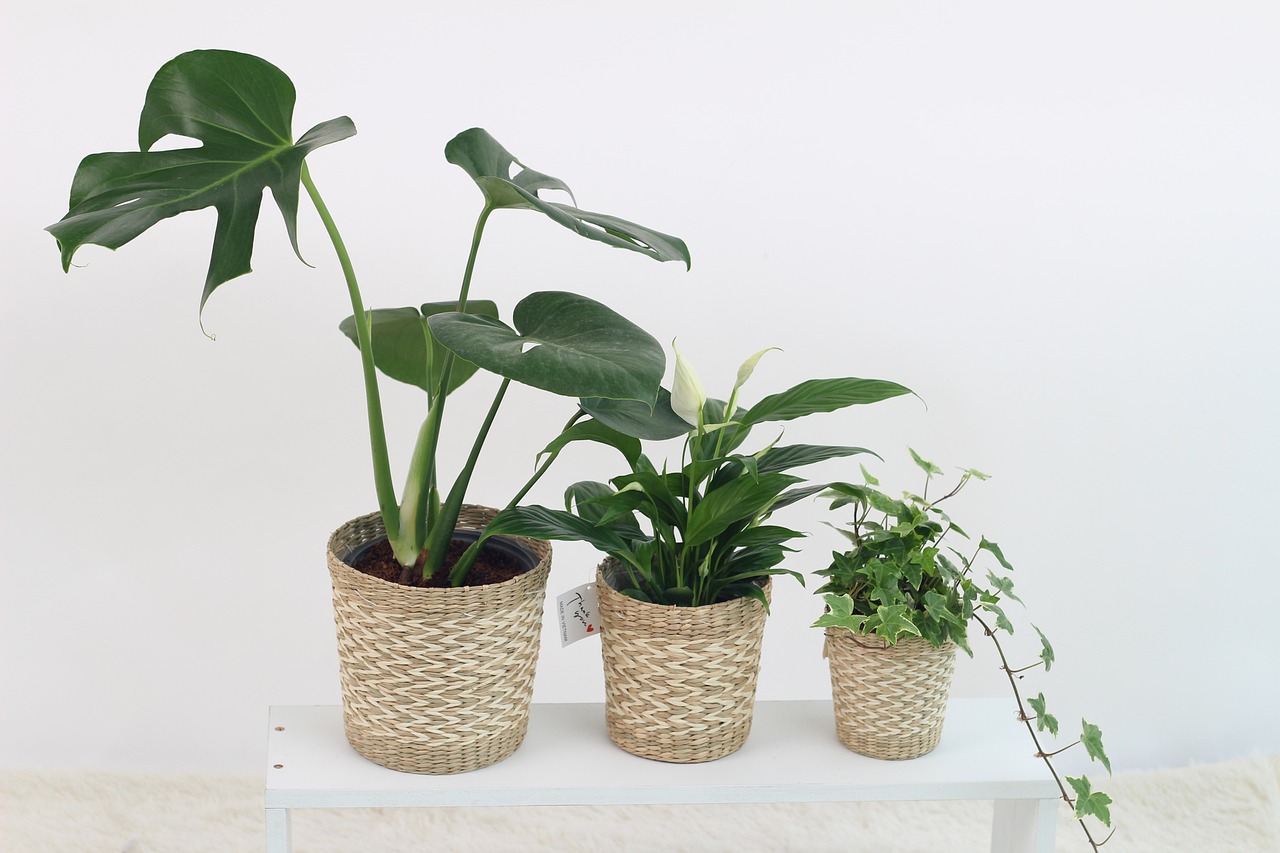
Watering Techniques
Watering your plants in recycled pots is not just about pouring water into them; it’s an art that requires attention and understanding of your plants' needs. One of the first things to consider is the type of material your pot is made from. For instance, plastic bottles retain moisture much better than tin cans, which can lead to different watering requirements. When you first plant your seeds or seedlings, it’s crucial to give them a good soak, ensuring the soil is evenly moist. This initial watering helps settle the soil around the roots, making it easier for the plants to establish themselves.
After the initial watering, the key is to develop a routine that works for your specific setup. A good rule of thumb is to check the soil moisture before watering again. You can do this by sticking your finger about an inch deep into the soil. If it feels dry, it’s time to water. If it’s still damp, wait a day or two. This method helps prevent overwatering, which is a common mistake that can lead to root rot. Remember, the goal is to keep the soil consistently moist but not soggy. You might find it helpful to use a moisture meter, especially if you’re new to gardening.
Furthermore, consider the time of day you water your plants. Early morning is often the best time, as it allows the plants to absorb moisture before the heat of the day causes evaporation. Watering in the evening can lead to prolonged moisture on the leaves, increasing the risk of fungal diseases. If you’re using pots with drainage holes, ensure that water can escape freely to avoid waterlogging.
Here’s a simple table summarizing the best practices for watering your recycled plant pots:
| Practice | Details |
|---|---|
| Check Soil Moisture | Stick your finger in the soil; if it’s dry, it’s time to water. |
| Watering Time | Early morning is ideal to reduce evaporation and disease risk. |
| Avoid Overwatering | Ensure pots have drainage holes and only water when necessary. |
Lastly, keep an eye on the weather. During hot summer days, you may need to water more frequently, while cooler, rainy days might require less. Adjusting your watering schedule based on environmental conditions is essential for the health of your plants. With these techniques, you’ll be well on your way to nurturing a thriving garden in your creatively crafted recycled pots.
- How often should I water my plants in recycled pots? It depends on the type of plant and pot material, but generally, check the soil moisture every few days.
- Can I use tap water for my plants? Yes, but let it sit for 24 hours to allow chlorine to evaporate before using it.
- What should I do if my plant is getting too much water? Allow the soil to dry out completely before watering again, and check for drainage issues.
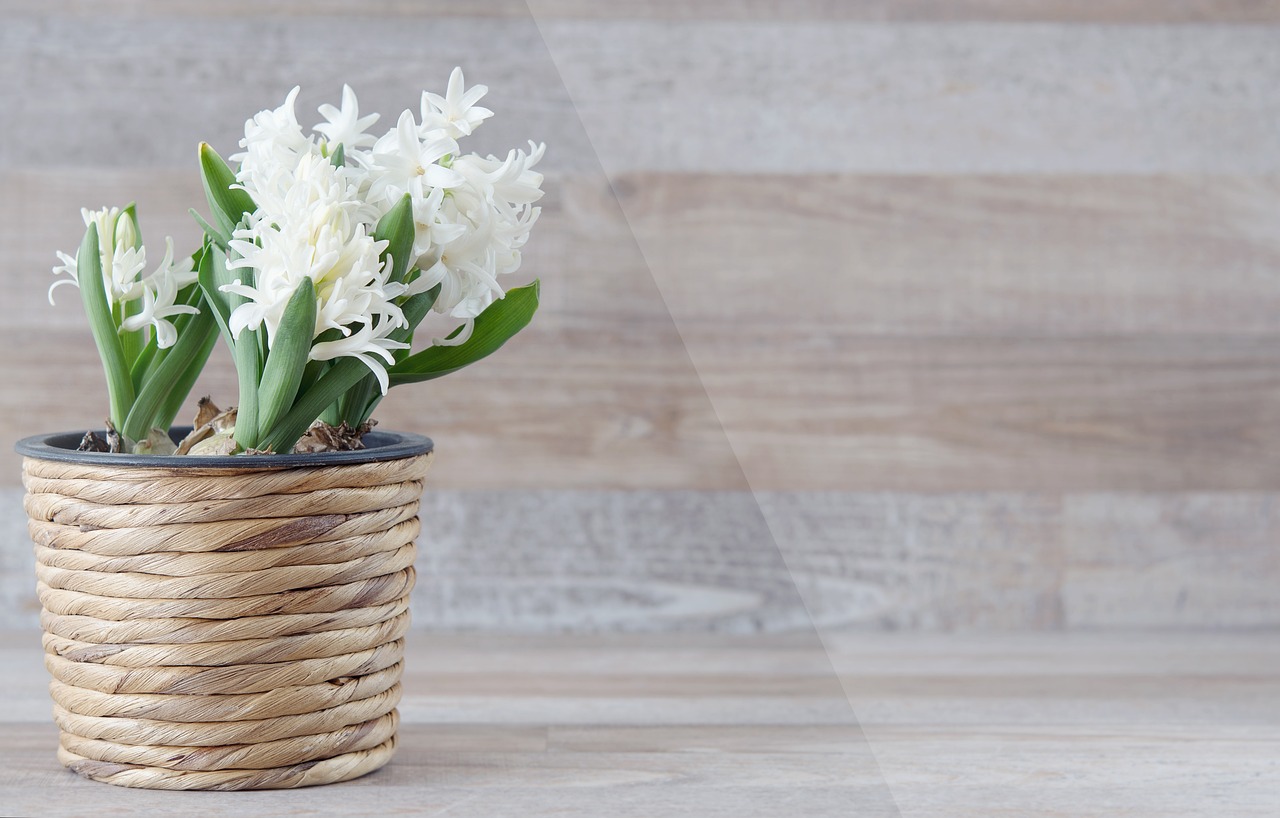
Creative Ideas for Unique Pots
When it comes to adding a personal touch to your gardening, creativity knows no bounds. Transforming recycled materials into unique plant pots not only showcases your style but also allows you to express your personality in your garden or home. Imagine walking into your space and being greeted by vibrant, one-of-a-kind pots that tell a story. The beauty of crafting your own planters is that they can be as unique as you are!
Let's dive into some innovative ideas that can help you create pots that stand out. One popular approach is to design themed pots that can enhance the overall aesthetic of your garden. For instance, you could create seasonal pots that reflect the beauty of each time of year. Think about using bright colors and floral patterns in spring, warm tones and earthy designs in autumn, or even whimsical motifs for a summer garden party. Themed pots can serve as conversation starters, making them perfect for entertaining guests or simply enjoying your own space.
Another exciting idea is to incorporate functional elements into your designs. Why not create multi-purpose planters that serve additional roles? For example, you could construct vertical gardens using old wooden pallets or repurposed crates. These not only save space but also add a stunning visual element to your garden. Additionally, consider making herb spirals from recycled materials. These spirals allow you to grow a variety of herbs in a compact area while providing an eye-catching feature that can elevate your gardening experience.
To inspire your creativity further, here are a few themes and styles to consider for your unique pots:
- Color-Coordinated Designs: Choose a color palette that complements your home or garden decor for a cohesive look.
- Whimsical Characters: Turn your pots into fun characters! Paint faces or add googly eyes to create playful garden companions.
- Natural Elements: Incorporate stones, twigs, or shells into your designs for a rustic, nature-inspired feel.
As you embark on this creative journey, remember that the only limit is your imagination. Experiment with different materials, shapes, and colors to create pots that not only house your plants but also reflect your unique style. The satisfaction of nurturing your plants in pots you've crafted yourself is truly unparalleled, and it can turn an ordinary garden into a vibrant expression of who you are.
Q: Can I use any type of recycled material for my plant pots?
A: Most recycled materials can be used, but ensure they are safe for plants. Avoid materials that may leach harmful chemicals.
Q: How do I ensure proper drainage in my recycled pots?
A: Make sure to poke holes in the bottom of your pots to allow excess water to escape, which is crucial for plant health.
Q: What are some easy decorating techniques for my pots?
A: You can paint, use decoupage, or even wrap your pots with twine or fabric for a personalized touch.
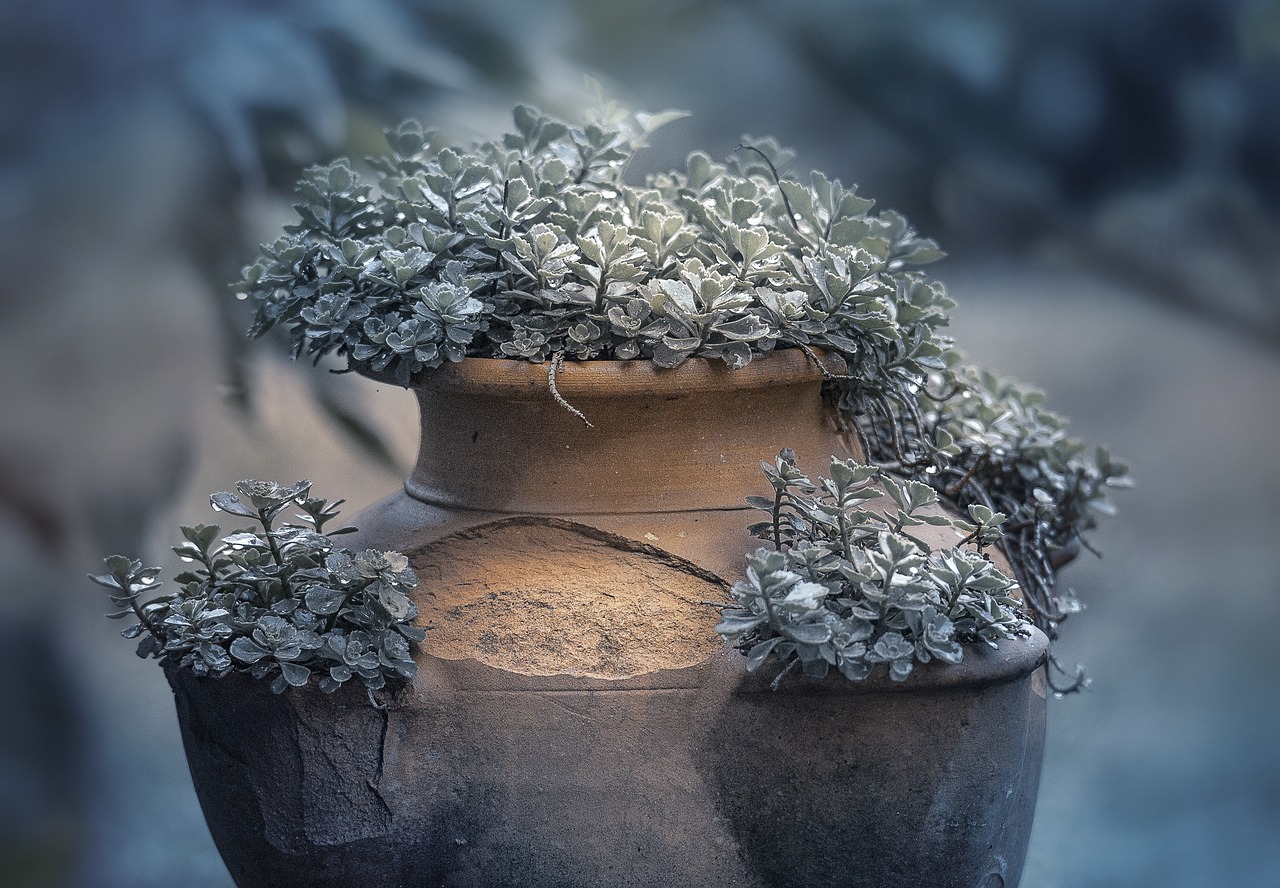
Themed Pot Designs
When it comes to gardening, why not let your creativity bloom? Themed pot designs can transform your garden or indoor space from ordinary to extraordinary, allowing you to express your personality while giving your plants a stylish home. Imagine stepping into your garden and being greeted by a vibrant array of pots that tell a story, evoke a season, or simply bring a smile to your face. Creating themed pots is not just about aesthetics; it’s about crafting an experience that reflects who you are.
One popular approach to themed pot designs is to align them with the seasons. For instance, in the spring, you might choose pastel colors or floral patterns that echo the blooming flowers around you. Summer could inspire bright, tropical colors or beach-themed decorations, while autumn might call for earthy tones and rustic elements like twine or burlap. Winter can be a time for cozy, warm colors, perhaps with a hint of sparkle to mimic the season's festive spirit. These seasonal themes can be as simple or as intricate as you desire, making it easy to switch them up throughout the year.
Another exciting avenue is to create color-coordinated pots. This could involve selecting a color palette that resonates with your home decor or the surrounding landscape. For example, if you have a predominantly green garden, adding pots in vibrant shades of blue or yellow can create a striking contrast. Alternatively, a monochromatic scheme can bring a sense of elegance and sophistication. You can even take it a step further by using various shades of the same color, which adds depth and visual interest to your gardening space.
Whimsical designs are also a fantastic way to showcase your personality. Think about using quirky materials or shapes that spark joy. For example, you could paint pots to resemble animals, characters from your favorite stories, or even everyday objects like teacups or shoes. This playful approach not only makes for a delightful garden but also serves as a conversation starter when guests come to visit. The key is to let your imagination run wild and create pots that make you smile every time you see them.
In addition to aesthetics, consider the functionality of your themed pots. Multi-purpose designs can be both beautiful and practical. For instance, a vertical garden made from stacked, themed pots can save space while creating a stunning focal point. You can incorporate herbs, flowers, or even succulents into these designs, ensuring that they not only look good but also serve a purpose in your gardening journey.
To inspire your creativity, here’s a quick overview of some themed pot ideas:
| Theme | Description | Materials |
|---|---|---|
| Seasonal | Colors and designs that reflect the current season. | Paint, natural elements, seasonal decorations |
| Color-Coordinated | Pots that match or complement the surrounding decor. | Paint, fabric, colored stones |
| Whimsical | Fun and quirky designs that showcase personality. | Paint, recycled materials, craft supplies |
| Functional | Creative pots that serve multiple purposes. | Wood, metal, various recycled items |
In conclusion, themed pot designs are a wonderful way to add flair to your gardening endeavors. Whether you choose to follow the seasons, coordinate colors, embrace whimsy, or enhance functionality, the possibilities are endless. So, grab those recycled materials, unleash your creativity, and let your plant pots tell your unique story!
- What materials can I use for themed pot designs? You can use a variety of recycled materials like plastic bottles, tin cans, old shoes, or even wooden crates.
- How do I ensure my themed pots are safe for my plants? Make sure to clean and prepare your materials properly, ensuring there are no harmful residues or sharp edges.
- Can I change the theme of my pots throughout the year? Absolutely! Changing themes seasonally can keep your garden looking fresh and exciting.
- What are some easy decorating techniques for beginners? Start with simple painting or wrapping pots in twine or fabric for a quick and easy transformation.
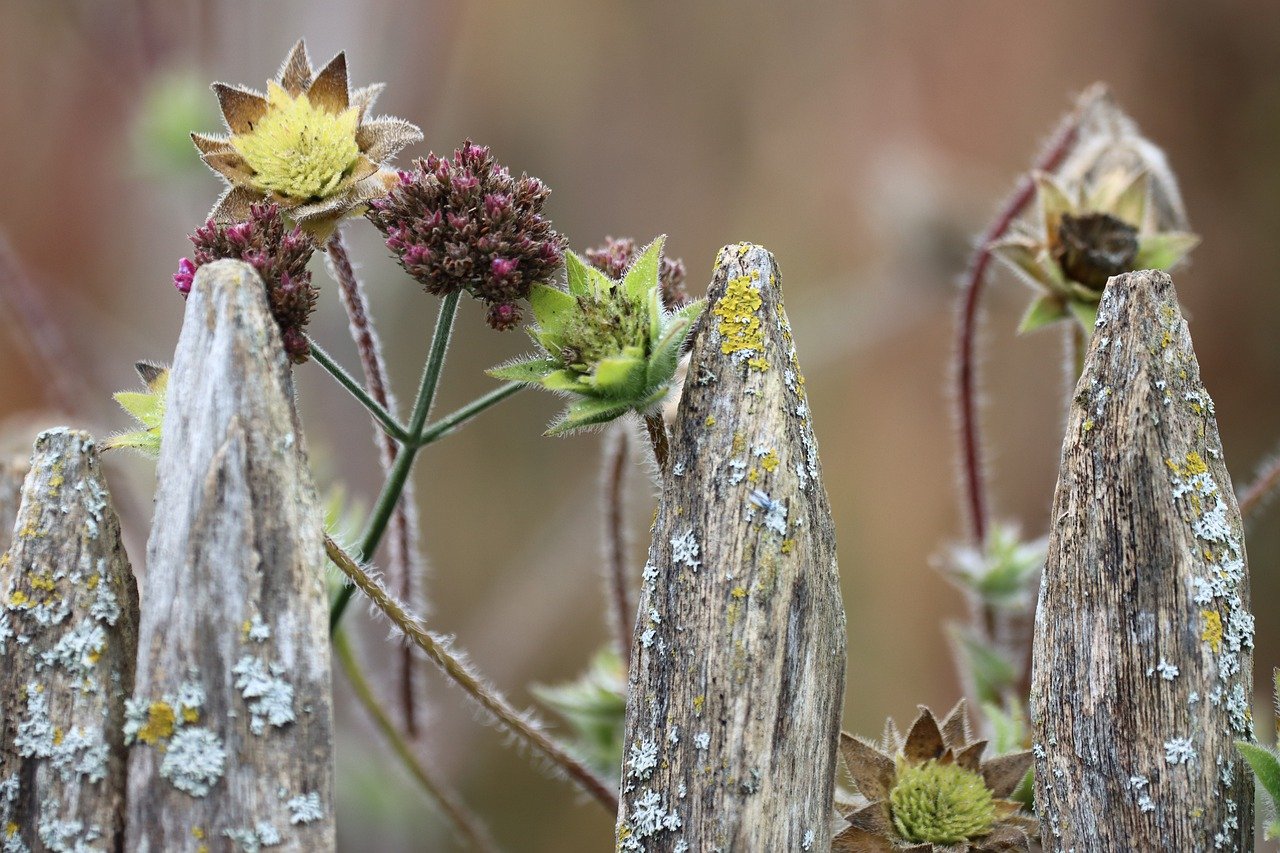
Functional Planters
When it comes to gardening, why settle for ordinary when you can create that not only serve a purpose but also enhance the beauty of your space? Imagine transforming your recycled materials into stunning creations that not only hold your plants but also add a touch of flair to your home or garden. Functional planters are more than just pots; they can be innovative solutions that maximize your gardening space and cater to your specific needs.
One exciting idea is to create vertical gardens using old pallets or wooden crates. These structures allow you to grow a variety of plants in a compact area, making them perfect for small spaces or urban settings. By stacking planters vertically, you can save ground space while still enjoying a lush garden. This method also provides excellent drainage and air circulation for the plants, promoting healthier growth.
Another creative approach is to design herb spirals. Using stones, bricks, or even recycled bottles, you can build a spiral structure that allows you to grow multiple herbs in a small footprint. The spiral design creates different microclimates, providing varying levels of sunlight and moisture for each herb, ensuring that all your plants thrive. Not only does this add visual interest to your garden, but it also gives you easy access to fresh herbs right at your fingertips.
For those looking to incorporate practicality into their planters, consider creating self-watering pots. You can achieve this by using two containers—one larger and one smaller—where the smaller pot sits inside the larger one with a water reservoir at the bottom. This setup allows the plants to absorb water as needed, reducing the frequency of watering and ensuring they stay hydrated, especially during hot summer days. It's a fantastic way to combine functionality with sustainability, as you’re repurposing materials while making your gardening routine easier.
Finally, think about integrating multi-purpose planters into your garden. These can serve as both decorative elements and functional pieces. For instance, you could use an old wheelbarrow as a planter while keeping it as a charming garden feature. Alternatively, a vintage suitcase can be transformed into a quirky planter that doubles as a conversation starter. The key is to let your imagination run wild and see everyday items in a new light. Remember, the goal is to create something that not only looks good but also works hard for you!
- Can I use any type of recycled material for planters?
Yes, you can use various materials such as plastic bottles, tin cans, wooden crates, and even old shoes! Just ensure they are safe and suitable for plants. - Do I need to drill holes for drainage?
Absolutely! Proper drainage is crucial for plant health. Be sure to create holes in your recycled pots to prevent water from accumulating. - How can I decorate my functional planters?
You can paint them, add stickers, or use natural elements like stones and twigs. Get creative and let your personality shine through!
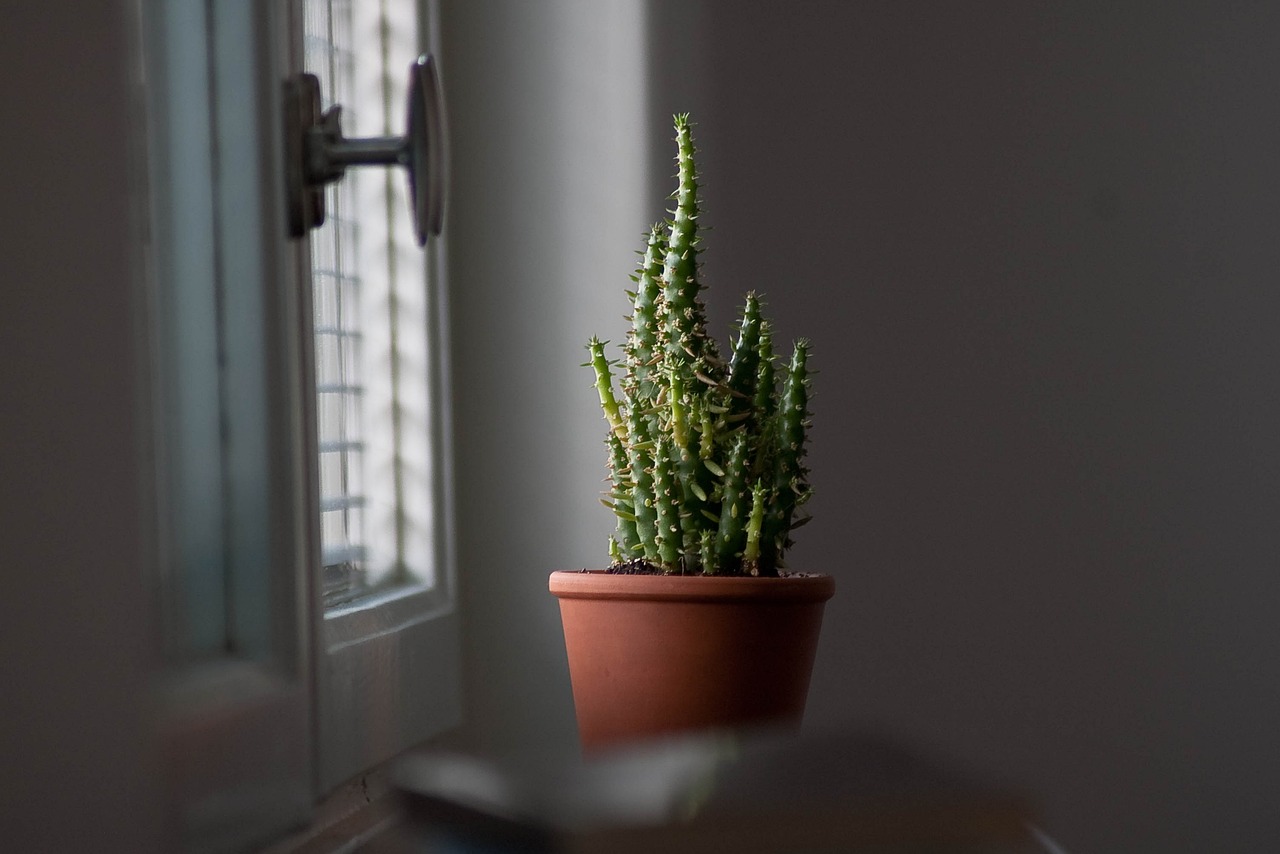
Maintaining Your Recycled Plant Pots
Regular maintenance is key to ensuring the longevity and functionality of your recycled plant pots. Just like any other gardening tool, these pots require a little love and care to keep them in prime condition. Think of it as giving your pots a spa day! By following some simple upkeep practices, you can ensure that your plants not only survive but thrive in their unique homes.
First and foremost, cleaning your pots is essential. Over time, dirt, algae, and even plant residues can build up, potentially harming your plants. A simple rinse with warm water and a gentle scrub with a soft brush can work wonders. For tougher stains or residues, you might want to soak the pots in a mixture of vinegar and water. This natural solution not only cleans but also helps to disinfect the surfaces, ensuring a safe environment for your plants.
Next, it's important to conduct periodic checks for wear and tear. This is especially true for pots made from materials like plastic or tin, which may degrade over time due to exposure to sunlight and moisture. Look for cracks, holes, or any signs of deterioration. If you notice any damage, it’s best to replace the pot or repair it with some strong adhesive, especially if the pot is still structurally sound. Remember, a small crack can lead to bigger problems, like soil loss or inadequate drainage.
To keep your pots looking fresh and vibrant, consider a seasonal cleaning routine. This could involve a thorough wash at the beginning of each growing season. Not only does this keep your pots attractive, but it also prepares them for new plantings. You might even want to change the color or style of your pots with a fresh coat of paint or some decorative elements. Just make sure any paint used is non-toxic and safe for plants!
Finally, don't forget about seasonal care tips. As the seasons change, so do the needs of your plants. For instance, during the hot summer months, you may find that your pots dry out more quickly. Keep an eye on moisture levels, and adjust your watering schedule accordingly. In contrast, during the winter, you might need to reduce watering as many plants enter a dormant phase. This attentiveness ensures your plants are always receiving the right care, tailored to the season.
- How often should I clean my recycled plant pots? It's recommended to clean your pots at least once every season to prevent buildup of dirt and algae.
- Can I use any type of paint on my pots? No, make sure to use non-toxic, plant-safe paints to avoid harming your plants.
- What should I do if my pot has a crack? If the crack is minor, you can use a strong adhesive to repair it. If it’s significant, it’s best to replace the pot.
- How do I know if my pot is degrading? Look for visible signs like cracks, fading colors, or brittleness, which indicate that the material is breaking down.

Cleaning and Upkeep
Keeping your homemade plant pots clean and well-maintained is crucial for the health of your plants and the longevity of the pots themselves. Just like you wouldn’t want to live in a dirty house, your plants thrive best in a clean environment. Regular cleaning not only enhances the aesthetic appeal of your pots but also prevents the buildup of harmful bacteria and pests that can jeopardize your plants' health. So, let's dive into some practical tips to keep your recycled plant pots in tip-top shape!
First off, it’s essential to establish a regular cleaning routine. Depending on your environment, you might want to clean your pots every few weeks or at least once a month. Start by gently removing any dead leaves or debris from the surface of the soil. This simple act can prevent mold growth and keep your pots looking fresh. A soft brush or cloth works wonders for this task.
Next, you’ll want to wash the pots themselves. For plastic containers, a mixture of warm water and mild soap is usually sufficient. Just avoid harsh chemicals that could leach into the soil and harm your plants. For tougher stains or residues, a solution of vinegar and water can be a natural alternative. Simply soak the pots for a few minutes, scrub gently, and rinse thoroughly. Remember, keeping your pots clean is like giving your plants a breath of fresh air!
For those pots made from materials like tin or ceramic, be cautious about using abrasive cleaners that might scratch the surface. Instead, a soft sponge and some baking soda can help lift those stubborn spots without damaging the finish. After cleaning, make sure to let your pots dry completely before replanting or adding new soil. Moisture trapped in the pots can lead to mold, which is definitely not something you want in your gardening space.
Additionally, it’s a good idea to periodically inspect your pots for any signs of wear and tear. Look for cracks or rust, especially in metal pots, as these can compromise the structural integrity and lead to leaks. If you notice any damage, it might be time to either repair the pot or repurpose it into something new. After all, creativity is key in gardening!
Lastly, consider the seasonal changes when it comes to upkeep. During the winter months, pots can become susceptible to frost damage. To protect them, you might want to bring them indoors or cover them with burlap or a similar material. In contrast, during the summer, ensure that your pots are not sitting in direct sunlight for too long, as this can cause them to heat up and potentially harm the roots of your plants.
In summary, regular cleaning and maintenance of your recycled plant pots not only extend their life but also create a healthy environment for your beloved plants. By incorporating these simple practices into your gardening routine, you can enjoy a thriving garden that reflects your creativity and commitment to sustainability.
- How often should I clean my recycled plant pots? It's recommended to clean them every few weeks or at least once a month to prevent the buildup of dirt and bacteria.
- What cleaning solutions are safe for plant pots? A mixture of warm water and mild soap, or a vinegar-water solution, works well. Avoid harsh chemicals that could harm your plants.
- Can I repair cracked pots? Yes, depending on the material, you can use sealants for minor cracks or consider repurposing them creatively if they are beyond repair.
- How can I protect my pots during winter? Bring them indoors or cover them with burlap to prevent frost damage.

Seasonal Care Tips
Taking care of your plants in recycled pots isn’t just about the initial setup; it’s also about adapting your care routine to the changing seasons. Each season brings its own challenges and opportunities for your plants, and understanding these can make a world of difference in their health and growth. For instance, during the spring, plants are waking up from their winter slumber, and they often require more water and nutrients as they begin to grow actively. On the other hand, in winter, many plants enter a dormant phase and need less water and care. So, how can you ensure your plants thrive year-round? Let’s dive into some essential seasonal care tips!
In the spring, as the temperatures rise, it's crucial to monitor your plants closely. They may need a boost of nutrients, so consider adding a balanced fertilizer to your watering routine. Additionally, be on the lookout for pests that may emerge as the weather warms up. Regularly inspect your pots and plants for any signs of infestation. If you notice any unwanted guests, organic insecticidal soap can be an effective solution.
As we transition into the summer, the heat can be intense, especially for plants in containers. Recycled pots can heat up quickly, which might stress your plants. To combat this, you can:
- Move pots to a shaded area during the hottest parts of the day.
- Use mulch on top of the soil to retain moisture and keep the roots cool.
- Increase your watering frequency, ensuring the soil remains consistently moist but not waterlogged.
When autumn rolls around, it’s time to prepare your plants for the cooler months ahead. This is an excellent time to prune any dead or overgrown foliage, which helps promote healthier growth in the spring. Additionally, consider bringing any sensitive plants indoors or providing them with frost protection. If you’re growing herbs or vegetables, now is the time to harvest the last of your summer crops, making room for any fall plantings.
Finally, during the winter, your plants will likely enter a state of dormancy. This means they will require less water and minimal feeding. However, don’t forget about them completely! Keep an eye on humidity levels, especially if your home is heated, as this can dry out the air and affect your plants. A simple way to combat this is by placing a tray of water near your pots or using a humidifier. Remember to check for any signs of pests, as they can thrive in warm indoor environments.
In summary, seasonal care is all about observing and responding to your plants' needs as they change throughout the year. By adjusting your care routine, you can ensure your recycled pots remain vibrant and your plants flourish, no matter the season.
Q: What kind of recycled materials are best for making plant pots?
A: Common materials include plastic bottles, tin cans, old containers, and even cardboard. Just ensure they have proper drainage!
Q: How do I ensure my recycled pots are safe for plants?
A: Clean your materials thoroughly and avoid using anything that may leach harmful chemicals into the soil.
Q: Can I use any type of paint to decorate my pots?
A: It's best to use non-toxic, water-based paints to avoid harming your plants.
Q: How often should I water plants in recycled pots?
A: This varies by season and plant type, but always check the soil moisture before watering to avoid over or under-watering.
Frequently Asked Questions
- What materials can I use to create recycled plant pots?
You can use a variety of materials such as plastic bottles, tin cans, old containers, and even cardboard. The key is to choose items that are sturdy and safe for plants. Just make sure to clean them properly before use!
- How do I prepare recycled materials for planting?
Start by cleaning your materials thoroughly to remove any residues or contaminants. After that, cut and shape them to create drainage holes and ensure they are suitable for the plants you want to grow. This preparation is crucial for the health of your plants.
- Can I decorate my recycled plant pots?
Absolutely! Decorating your pots is a fun way to express your creativity. You can paint them, use decoupage techniques, or even add natural elements like stones or twigs to enhance their look. The possibilities are endless!
- What are the benefits of using recycled pots?
Using recycled pots not only helps reduce waste but also saves you money and allows for personal expression. It’s a sustainable choice that contributes positively to the environment while giving your garden a unique touch.
- How do I ensure my plants thrive in recycled pots?
Choose the right soil mix that suits your plants and enhances drainage. Pay attention to watering techniques, as recycled pots may retain moisture differently than traditional pots. Regularly check your plants to adjust care as needed!
- What are some creative ideas for unique plant pots?
Consider creating themed pots that match your garden's aesthetic or using functional designs like vertical gardens. You can even repurpose items for dual purposes, such as using a ladder as a plant stand!
- How do I maintain my recycled plant pots?
Regular cleaning and upkeep are essential for longevity. Check for wear and tear, and clean them periodically to prevent any build-up that could harm your plants. Seasonal care adjustments are also important to keep your plants healthy throughout the year.



















